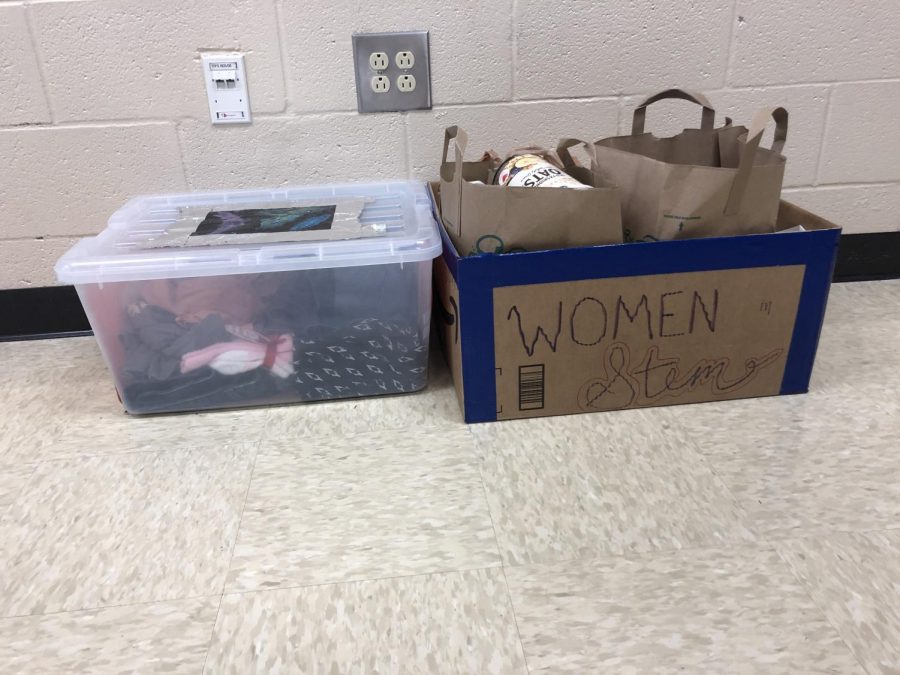Women in STEM Club Seeks to Raise Supplies and Break Barriers
The box for supplies going to the Drake House, located in room 1126.
February 27, 2020
Thinking back to a middle or elementary school science class, a few details about scientific history seem to stick out in the minds of most.
Perhaps these include Neil Armstrong walking on the moon for the first time, Watson & Crick discovering the structure of DNA or Alan Turing fathering modern computer science while breaking code during World War II.
However, it is unlikely that many recall some of the other names behind these scientific milestones: Katherine Johnson, Rosalind Franklin or Ada Lovelace. Despite their contributions to the scientific, technological, engineering and math fields, these women are rarely acknowledged to the degree of their male counterparts.
The school’s Women in STEM club is seeking to change this, as well as encourage some new famous scientific names in the process.
Women in STEM club is new this school year and was founded by juniors Elizabeth Apalkova and Rachel Mason.
The club has accomplished projects such as promotional posters and social media campaigns highlighting the accomplishments of numerous women in STEM. Their latest endeavor, though, has been more community service-oriented with a supply drive for local charity The Drake House, which assists homeless mothers and children.
They are currently collecting cleaning supplies, feminine hygiene products and clothing donations through a donation box located in room 1126. The drive ends Friday.
The idea to raise supplies for the Drake House was brought up by the club’s social media chair, junior Madison Cochran. Cochran, who has been involved with assisting the Drake House in the past, hoped the drive could help to accomplish the club’s goal of uplifting women and children in the community.
“You can’t be interested in something like science if you’re too worried about having somewhere to sleep at night,” said Cochran.
Although collecting supplies for a charity does not seem at first directly applicable to promoting women in STEM, the club’s leaders hope that it can make a positive impact on the community as a whole.
“The more women we can uplift, the more women we can push to reach their goals,” said Mason. “Whether that be in STEM or otherwise.”
Apalkova hopes that raising supplies can show the children being assisted that their financial situation should not hinder their goals.
“I think [the Drake House] specifically helps the children because we’re helping to give them opportunity and enhance their education,” said Apalkova. “It can show them that a lot of things are possible, even if they’re not in a situation to do those things.”
The drive also goes towards the club’s goal of exposing younger generations to STEM. Some of their projects, such as partnering with local Girl Scout troops to perform science experiments, revolve around this.
“We’re trying to get [children] interested in science, make them like it early on so they stick with it,” said Apalkova.
Whether through raising awareness, working with the community or connecting girls at the school to opportunities such as internships and science competitions, the club ultimately hopes their efforts can make others more cognizant of women’s contributions to STEM fields and break down barriers that discourage women from pursuing them.
“I think every woman in STEM, and every person in STEM, I hope, wants to open up the field and make it more inclusive for all kinds of people,” said Mason.
“If anyone reading this is a woman in STEM or wants to be a woman in STEM, I would say to seek positive reinforcement from other women in the field.”

